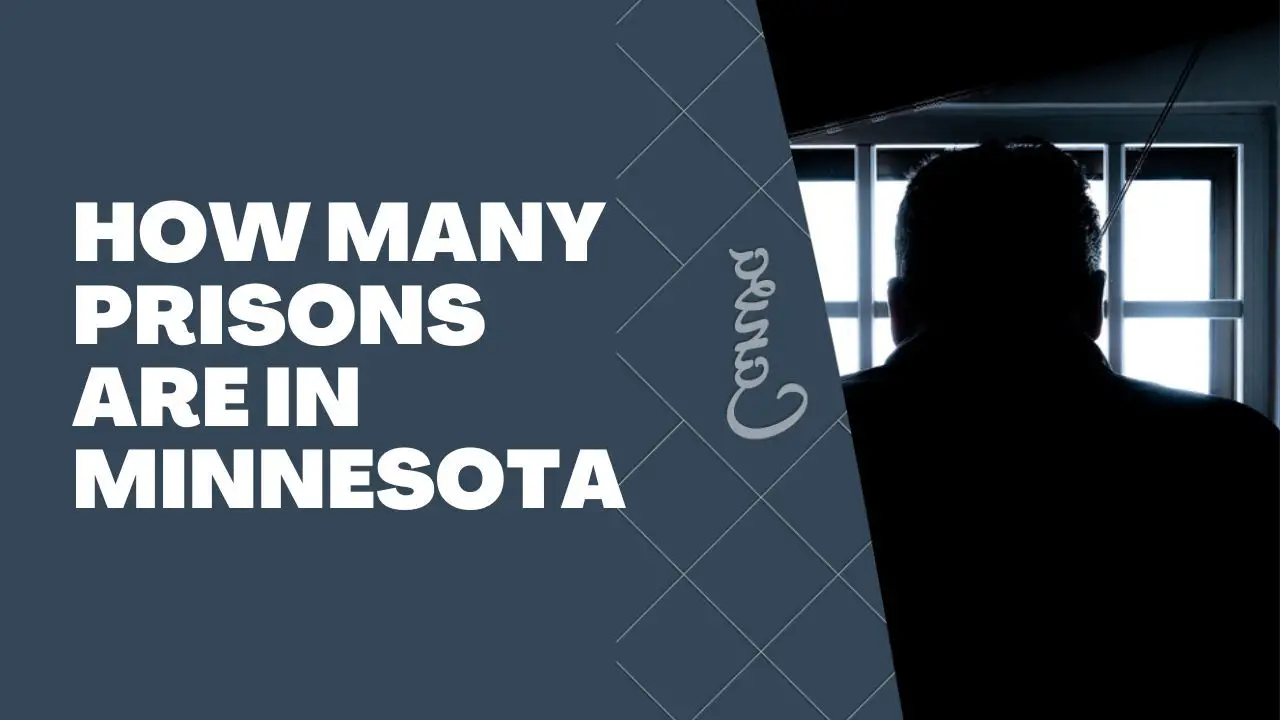How Many Prisons are in Minnesota
In this article, we will delve into the prison system of Minnesota and explore the number and types of prisons within the state.

Have you ever wondered how many prisons there are in Minnesota? Understanding the prison system in any state is crucial to comprehending its criminal justice landscape.
In this blog post, we will delve into the prison system of Minnesota and explore the number and types of prisons within the state. By the end, you will have a clear picture of the prison infrastructure in Minnesota and its significance in the criminal justice system.
So, let's begin our exploration of how many prisons exist in Minnesota.
Overview of Prisons in Minnesota:
Minnesota is home to various prisons that act as correctional facilities for criminally charged individuals. Providing an opportunity for rehabilitation and reintegration into society are two goals of these prisons, in addition to guaranteeing public safety.
Managed by the Minnesota Department of Corrections, the state's prison system encompasses various facilities tailored to different security levels and inmate needs.
From maximum-security to minimum-security and women's facilities, each prison offers programs and services to promote personal growth, education, vocational training, and therapeutic interventions. Minnesota aims to reduce recidivism rates and create a safer society by focusing on rehabilitation.
Through the following sections, we will explore Minnesota's state and federal prisons, highlighting their roles and the programs they offer while also discussing the distinctions between state and federal correctional facilities.
Read How Many Prisons Are in Leavenworth, Kansas?
What State Prisons Are in Minnesota?
Minnesota operates several prisons to incarcerate felons from across the state. These facilities fall under the management of the Minnesota Department of Corrections. Their responsibility extends beyond mere incarceration, including rehabilitation and reintegration services upon release.
Minnesota's state prison system consists of 10 facilities spread throughout the state. These prisons have different security levels categorized as maximum, medium, minimum, and women's facilities. The classification of inmates into these facilities is based on factors such as the severity of their crimes, their behavior in prison, and their specific needs.
Let's explore some of the key state prisons in Minnesota:
Stillwater Correctional Facility: Established in 1914, Stillwater is the oldest prison in Minnesota. It houses male and female inmates and has undergone renovations and expansions to accommodate the growing population. Stillwater provides various programs and services to address its inmates' diverse needs.
Lino Akes Correctional Facility: This medium-security prison primarily focuses on preparing inmates for successful reintegration into society. It provides mental health care, drug and alcohol treatment, and educational and vocational programs. Lino Lakes also emphasizes community involvement, encouraging inmates to give back through community service initiatives.
Oak Park Heights Correctional Facility: Considered Minnesota's highest security level facility, Oak Park Heights houses the most dangerous and violent offenders. With strict regulations and limited access to programs, Oak Park Heights focuses on maintaining security while addressing the specific needs of its inmate population.
Shakopee Correctional Facility: As the only prison in Minnesota dedicated to housing female inmates of all security levels, Shakopee addresses the unique challenges women face in the criminal justice system face. It provides gender-specific programs focusing on mental health, trauma-informed care, and family reunification.
Read Listed: Private Prisons In The States Of Alaska
How Many Federal Prisons Are There in Minnesota?
In addition to state-run prisons, Minnesota also houses federal prisons under the jurisdiction of the North Central Regional Office of the Bureau of Prisons. There are three stand-alone federal prisons and one federal prison camp in Minnesota.
The federal prisons in Minnesota are as follows:
Federal Prison Camp Duluth: Nonviolent convicts from Saint Louis County are housed in this facility. To help offenders get ready for their ultimate release, it offers dormitory-style living as well as access to exercise equipment, reading materials, and job opportunities.
Federal Medical Center Rochester: Male offenders of all security levels who require continuing medical or mental health care are housed in this administrative facility near Rochester. For the specific demands of prisoners, FMC Rochester maintains a specialized team that includes healthcare specialists. Additionally, it provides different programs, therapeutic groups, and drug abuse courses.
Federal Correctional Institution Sandstone: In Sandstone, Minnesota, there is a federal prison with a low level of security. It primarily serves male offenders and provides educational, vocational, and enrichment classes. The facility also includes a segregated, high-security wing for informants and those in danger of retaliation.
Federal Correctional Institution Waseca: Originally a prison for males, this facility in Waseca was converted into an all-female facility in 2008. Inmates at FCI Waseca are required to hold prison jobs and participate in educational and enrichment programs.
How Many Prisons are in Total in Minnesota?
Minnesota is home to a total of fourteen correctional facilities when we consider both state and federal prisons. These facilities are in charge of housing and overseeing those who have been convicted of crimes in the state.
Other than prisons, the state has 82 jail facilities. These facilities serve as local detention centers where individuals are held while awaiting trial or serving shorter-term sentences.
State vs. Federal Prisons in Minnesota
Understanding the distinction between state and federal prisons is essential to comprehensively understanding Minnesota's correctional landscape.
State prisons in Minnesota are operated by the Minnesota Department of Corrections and primarily house individuals convicted of crimes under state law. These prisons play a vital role in the state's criminal justice system, focusing on rehabilitation, public safety, and successful reintegration.
State prisons provide a range of services and initiatives, such as education and job training, drug abuse treatment, and mental health care. By addressing the underlying causes of criminal behavior and providing opportunities for personal growth, state prisons strive to reduce recidivism rates and promote positive outcomes for inmates.
On the other hand, those convicted of federal offenses are housed in federal prisons run by the Bureau of Prisons in Minnesota. These crimes typically involve offenses against federal laws or crimes that cross state lines. While federal prisons follow similar principles of rehabilitation and reintegration, they operate under federal guidelines and regulations.
Both state and federal prisons in Minnesota aim to provide inmates with a safe and secure environment while offering opportunities for personal development and positive change. These prisons reduce criminal behavior and create a safer society by offering educational programs, vocational training, and mental health services.
It's worth noting that collaboration and information-sharing between state and federal correctional agencies are essential for effective inmate management and successful reintegration efforts.
By working together, these institutions can combine resources, share best practices, and implement comprehensive approaches to rehabilitation.
Prisons in the State of Minnesota Conclusion
Understanding the prison system in Minnesota involves knowing the number and types of prisons within the state. With ten state-run prisons and four federal facilities, Minnesota has a comprehensive framework for housing and managing inmates.
These facilities prioritize confinement while offering chances for recovery and reintegration into society. By acknowledging the existence and purposes of these prisons, we can work towards creating a fair, effective, and humane criminal justice system in Minnesota.
